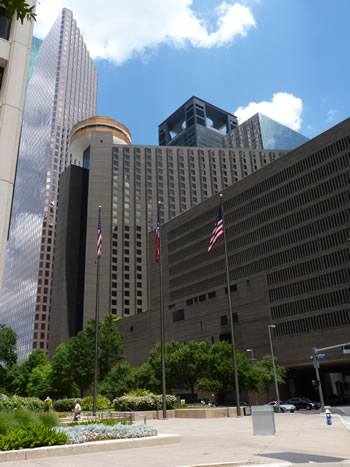Real-time energy meters have never been used to monitor this kind of energy use and savings on such a large scale. The Green Generation Solutions study of the Hyatt Regency Houston was the first of its kind to directly measure the energy saved through window film installation alone.
What’s the best way to prove that your green investments are paying off? To measure the savings on utility bills, and improvements that tenants are experiencing as a result of your investment.
Whether you’re cutting back on energy use due to mandates or voluntary efforts, quantifying the savings from your green initiatives can help determine whether the purchases are truly worth it (or at least offset implementation costs). This data can go a long way toward supporting other green investments in the future as well. It can also be a solid indicator of improved building performance, which could make your facility more attractive to tenants or prospective buyers.

To measure the effectiveness of window film, the 30-story Hyatt Regency Houston used an extensive sub-metering system to measure precise temperature readings and HVAC usage in guestrooms. It was the first study of its kind to directly measure the energy saved through window film installation alone.
Doing all of this sounds easy, but it can be very difficult to pinpoint the energy, water, or productivity savings from just one sustainability upgrade. Most facilities professionals have multiple projects underway, implementing several processes and procedures at a time to curb energy and water use. So how do you know how much money you’ll truly save with a green product?
Simple, Sustainable Solution
The 30-story Hyatt Regency Houston, an AAA Four Diamond hotel built in 1972, had the same question. So, at the request of the local utility, the hotel suspended any new green initiatives for six months to test the savings of just one investment: high-performance, low-e window film. Partnering with Green Generation Solutions (GGS), a third-party energy management consultant, to measure actual savings, the team knew that windows were typically the worst-performing component of the building envelope when it came to protecting and insulating against solar heat gain and thermal conduction.
Hyatt Regency Houston management was receiving frequent complaints about warm temperatures from guests on the southeast and southwest sides. The hotel’s single pane, bronze-tinted windows were the largest source of heat transfer into the building; the temperature by the windows could reach as high as 125 degrees F. The hotel was looking at window film to not only reduce its annual $1.6 million energy bill, but also address guest complaints and achieve fast ROI.
Why Window Film?
By significantly improving window insulation, newer low-e window films offer commercial facilities year-round performance. Most window films do a good job of reducing solar heat gain during summer months, but don’t retain heat well during winter months. Some window films do both, successfully keeping heat out during the summer while preventing heat loss during cold months.
Despite the documented benefits daylight can offer – decreased reliance on artificial light, reduced energy bills, and increased health and productivity – if the sun’s UV rays aren’t controlled, sunlight can actually cause a lot of damage and discomfort. The right window film can improve comfort for tenants and occupants by eliminating hot and cold spots within a building.
Window film also allows a building’s blinds, curtains, or shades to be kept open so tenants and occupants can enjoy a connection with nature without uncomfortable temperatures and productivity-reducing glare. Window film can also defend against UV ray exposure (ordinary window glass offers almost no protection). UV radiation exposure is cumulative, and can occur through windows even when you’re indoors. For tenants and occupants, overexposure to UV rays can ultimately lead to skin diseases like cancer. For your facility, UV rays can cause wallcoverings, floors, furniture, artwork, fabric, and other assets to fade.
One Big Green Payoff
To measure the savings from window film, GGS used an extensive sub-metering system at the Hyatt Regency Houston to determine precise temperature readings and HVAC usage in 48 southeast- and southwest-facing rooms with window film installed. The team then compared that information to the data captured from 48 southeast- and southwest-facing rooms without window film.
From July through December, the guestrooms with window film showed a reduction of 23% in cooling energy use and 25% in heating energy, according to the comparative sub-meter data. Using national average installation costs, and taking an energy-efficiency rebate from the local utility into account, these energy savings provide a full payback of 3.6 years, or an ROI of 28% per year. The low-e window film also reduced solar gain by 63% and improved insulating performance by 42%, resulting in energy savings as high as 30% during peak days when HVAC systems would be running more often.
And even though summertime solar heat gain and wintertime heat loss were substantially reduced, hotel guests still enjoy a high level of visible light transmittance; rooms aren’t dark and don’t require more artificial light.

